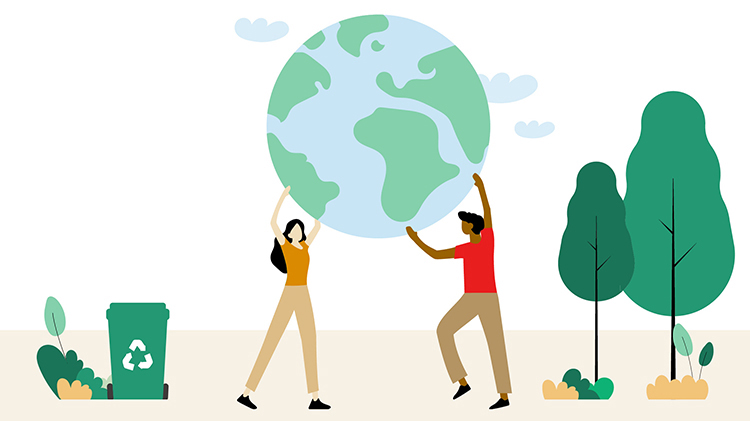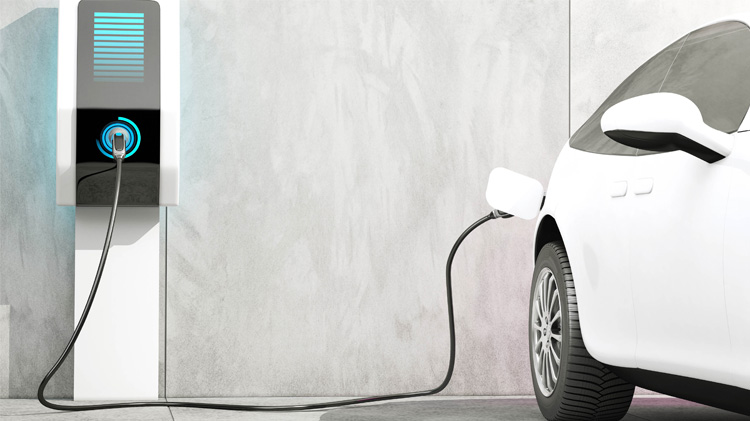How to be environmentally friendly at home and save on energy bills
Whether you’re looking to save some money or make changes for more environmentally friendly living, these tips may help.
Climate change has made living sustainably a hot topic, with 78% of consumers saying that a sustainable lifestyle is important to them, according to TheRoundup.org. If you fall in that category or are just curious to learn more about how to live a more sustainable lifestyle, here’s what to know.
What is environmental sustainability?
Everyone requires fresh water to drink, clean air to breathe and a hazard-free place to call home. Environmental sustainability refers to the practice of maintaining those essential parts of our natural environment and conserving resources to help support future generations of life. It’s a forward-thinking practice by nature, so while changes you make to your personal lifestyle may not feel significant, it can help more than you might think and there are some extra benefits you can gain in the process.
Much of your carbon footprint is tied to aspects of your property that you may not be able to change. When looking for a new place to live, you can check whether it’s green-certified to understand how environmentally friendly a property is. Green-certified houses will typically be listed as such or have a visible label indicating their recognition by programs like LEED, ENERGY STAR or the National Green Building Standard (NGBS). It may also be worth asking the seller or original builder directly, as they may be able to provide more details on the specific features the property has. If the property has secured a certification, it means that it has a reduced environmental impact due to factors like lower energy consumption, water conservation or the use of sustainable building materials.
While preserving the environment may seem like an overwhelming goal on the individual level, there are some simple steps you can start trying today to help make a difference.
Sustainable living and energy saving tips
One extra benefit to environmental stewardship is that it can also help make a difference in your monthly electricity bill. If that sounds good to you, consider some of the tips below.
- Unplug electronics not in use. These can use between 5% and 10% of a home's electricity. Consider running your major appliances during “non-peak hours” as well. Your utility company can share more details on this.
- Change your water heater settings. Many are set to 140 degrees Fahrenheit, but 120 degrees Fahrenheit works well for daily needs. Even turning down your water heater by just 10 degrees could save you $400 or more annually.
- Use LED bulbs. Not only do they last 25 times longer, they also use 90% less energy.
- Take care of drafts. Use caulk and weather-stripping to help seal the outside of your doors and windows.
- Use window covers. Close your window curtains or blinds when temperatures rise during the summer to help keep some of the heat out and open them when temperatures fall in the winter to let more heat in.
- Insulate your home. Insulation in your walls may lower energy usage by helping keep your home warmer in the winter and cooler in the summer.
- Install storm windows. Storm windows may improve the thermal insulation in your home to help reduce temperature fluctuations that can increase the use of your furnace or AC unit.
- Use smart thermostats. These can keep track of your energy usage and can be paired with other smart devices such as smart blinds or lights, which automatically close or turn off to help maintain temperature and conserve energy.
- Close your chimney. Hot or cold air can escape from your fireplace damper if left open, which may increase heating and cooling costs.
- Find and fix leaky faucets. Each drop can add up and can cost you money. And you could turn off the faucet while not actively using your sink — for example, while brushing your teeth.
Additional tips to be environmentally friendly
- Compost food. Putting your food scraps into compost may reduce greenhouse gas emissions from your waste and can be used to enrich your soil.
- Use a manual lawn mower. Not only will you remove gas emissions from the equation, but you may also have lower maintenance costs, a cleaner cut and a few extra calories burnt.
- Upgrade to energy efficient appliances. To find them, check out Energy Star’s list of products that they deem to be certified energy efficient.
- Clean your fridge coils. Your refrigerator may accumulate small particles like dust or fur around the coils. Use a thin bristled brush to clean the coils from time to time to help it run more efficiently.
- Use sustainable energy. If you can install them, rooftop solar panels, small wind turbines or hydroelectric generators can be used to help power your home.
- Wash clothes in cold water. By using cold water you may save up to 90% of the energy used compared to when using hot water. Try to wash full loads of laundry to help clean more clothes at one time.
- Use rags. Cut up old clothes and towels to pick up spills to help save on paper towel usage. Just throw them in the laundry when dirty and they're ready for the next spill.
- Use a water filter. Unfiltered water may cause a buildup that slows your appliances down, leading them to use more energy. Filtered water and reusable water bottles can help reduce plastic waste, too.
- Reduce waste. Buy only what you need and limit waste either by purchasing products that use less packaging or by buying in bulk.
- Reuse items. Think about what products you can use more than once and seek out permanent replacements, like a dedicated water bottle, instead of disposable plastic ones, or reusable grocery bags. Consider buying used goods when getting clothes, furniture or other similar products and maybe give away or sell some of your own.
- Recycle material. Simply separating your garbage can help reduce your greenhouse gas emissions and overall carbon footprint.
- Take showers. When getting ready, take a 10-minute shower instead of taking a bath to help reduce your water usage.
- Plant a garden. This may help improve air and soil quality, increase your local biodiversity and you could get some fresh produce as a bonus. If you don’t have yard space to do so, consider joining a community garden or participating in urban gardening.
- Switch cleaning products. Consider using natural cleaning products, as some products are made with synthetic ingredients which can be harmful to the environment.
- Limit food waste. Choose your portion sizes thoughtfully and stick to buying food products that you know you will use.
- Go paperless. Opt for digital methods of notetaking and enroll in paperless processing for your bills and credit card statements.
For more ways to help maintain your home, check out home maintenance tips from State Farm®.





